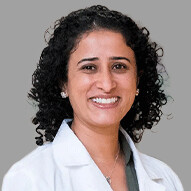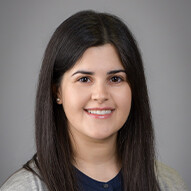Neuronal migration disorders (NMDs) in children
At Children's Health℠, we have deep expertise caring for children with neuronal migration disorders, also called neuronal migration defects (neu·ron·al - mi·gra·tion - de·fects). No matter your child’s symptoms, we provide care tailored to their unique needs. You can rest assured that our Level 4 Epilepsy Center provides the most advanced care, including surgery, medications and other approaches to help improve your child’s quality of life.
What are neuronal migration disorders (NMDs) in children?
As a baby develops in the womb, their neurons (brain cells) form in one area of the brain. Then, those cells are supposed to move to another location in the brain. Neuronal migration disorders happen when the neurons don’t end up in the right place. Parts of the brain may not form properly or may be missing.
These disorders can affect any area of the brain. Depending on the affected area, children have different symptoms and outlooks, but seizures and epilepsy are common. Other symptoms may appear as a child grows.
These conditions are one type of malformation of cortical development, a family of conditions where the outer layer of the brain doesn’t form properly.
What are the different types of neuronal migration disorders (NMDs) in children?
There are more than 25 different categories of neuronal migration disorders. The four main types are:
In heterotopia, neurons form clumps in the brain instead of moving to where they were supposed to be. Depending on the location of these cell clusters, children have epilepsy and may have developmental delays.
In lissencephaly, the cortex (the brain’s outermost layer) thickens. The brain also has abnormal folds so that it looks smooth instead of wrinkled. It can cause epilepsy, developmental delays and changes in a child’s facial appearance.
With polymicrogyria, the brain has too many small folds. As a result, children have epilepsy and mild to moderate developmental delays. They may have trouble controlling their lips, tongue and jaw muscles.
Schizencephaly means “split brain.” The brain has one or more clefts or splits lined with clumps of misplaced cells (heterotopia), cells that don’t fold as they should (polymicrogyria) or a combination of both. Symptoms depend on whether the splits affect both sides of the brain or just one.
What are the signs and symptoms of neuronal migration disorders (NMDs) in children?
Seizures (epilepsy) - if the seizure lasts longer than five minutes or seems violent, call 911
Developmental delays, which may be mild or more severe
Changes in facial shape
Movement problems, such as trouble controlling the arms, legs or mouth
How are neuronal migration disorders (NMDs) in children diagnosed?
Your doctor will do a detailed physical exam of your child. We’ll also talk with your family about what symptoms you are seeing and when you first noticed them.
Your child may have tests including:
MRI scan - This painless test uses magnetic fields to create a picture of your child’s brain. The picture helps us understand the brain’s structure.
Genetic and metabolic testing - Genetic tests pinpoint any genetic changes that could be causing symptoms. Metabolic tests help us identify or rule out metabolic disorders, which happen when your child’s body makes too much or too little of substances like fat or sugar.
Electroencephalogram (EEG) - Your child may have an electroencephalogram (EEG) to help determine where in the brain seizures start. We perform an EEG by placing electrodes on the scalp and recording the brain’s electrical activity.
We frequently perform fetal consultations through our Fetal and Neonatal Neurology Program. If a pregnancy ultrasound shows possible changes in your unborn baby’s brain, a fetal MRI can provide answers.
Our Neonatal Intensive Care Unit (NICU) neurology doctors work with your family before your baby is born. We help you prepare so that your child can receive epilepsy surgery as early as possible if we think it would benefit them.
What causes neuronal migration disorders (NMDs) in children?
Neuronal migration disorders happen when a baby’s brain is forming, as early as the first months of pregnancy. Experts believe that some types of neuronal migration disorders happen because of a genetic change (gene mutation). Other types happen because of environmental factors, such as infection, vascular (blood vessel) conditions or metabolic conditions.
How are neuronal migration disorders (NMDs) in children treated?
We work to start treatment as quickly as possible to improve your child’s future. Treatments can include:
Medication - Antiseizure drugs help control seizures in some children.
Surgery - Some children need surgery to control epilepsy. The Epilepsy Center at Children’s Health’s epilepsy surgery program has excellent patient outcomes.
Vagus nerve stimulator (VNS) - Surgeons implant the VNS device under the skin in your child’s chest. The device helps regulate the vagus nerve’s activity to reduce seizures. Patients or caregivers can also activate the VNS to stop seizures after they start.
Responsive neurostimulation (RNS) - An implanted RNS device monitors your child's brain activity and recognizes when a seizure is about to happen. It sends a signal to stop seizures before they start.
Deep brain stimulation (DBS) - Wires placed in your child’s brain connect to a DBS device placed under the skin in their chest. The device uses electrical signals to block seizures.
Resective surgery - Your child’s surgeon might remove part of the brain where seizures start. Or we may use less-invasive techniques like laser surgery to burn away problem areas.
Diet - We may recommend following a special diet to reduce seizures or their effects. Options include the ketogenic diet, modified Atkins diet or low glycemic index diet.
Neuronal migration disorders (NMDs) in children doctors and providers
Your child receives care from a comprehensive team of epilepsy specialists, including fetal and neonatal neurologists and surgical specialists from our Neurosurgery program.
 Jennifer Thomas, MDPediatric Neurologist
Jennifer Thomas, MDPediatric Neurologist Dallas Armstrong, MDPediatric Neurologist
Dallas Armstrong, MDPediatric Neurologist Saima Kayani, MDPediatric Neurologist
Saima Kayani, MDPediatric Neurologist Michelle Machie, MDPediatric Neurologist
Michelle Machie, MDPediatric Neurologist Rana Said, MDPediatric Neurologist
Rana Said, MDPediatric Neurologist Lauren Sanchez, MDPediatric Neurologist
Lauren Sanchez, MDPediatric Neurologist Deepa Sirsi, MDPediatric Neurologist
Deepa Sirsi, MDPediatric Neurologist Afsaneh Talai, MDPediatric Neurologist
Afsaneh Talai, MDPediatric Neurologist Cynthia Wang, MDPediatric Neurologist
Cynthia Wang, MDPediatric Neurologist